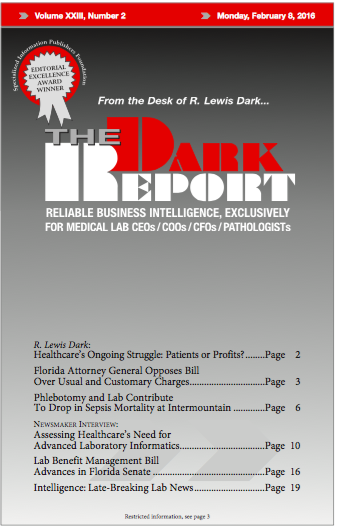CEO SUMMARY: By now, most pathologists and clinical laboratory administrators recognize that effective use of information technology will be a critical success factor as healthcare systems transform to do population health management and to use “big data” with value-based payment models. As the provider of laboratory information systems to hundreds of the nation’s major hospitals, […]
To access this post, you must purchase The Dark Report.


